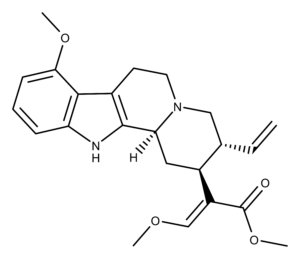The Chemistry of Paynantheine
Paynantheine is a derivative of mitragynine and one of the major alkaloids in the plant Mitragynia speciosa (aka kratom).1
The Pharmacology of Paynantheine
In 2016, Kruegel et al. found that paynantheine is a competitive antagonist at the human mu opioid receptor.2 The IC50 values for paynantheine were in the micromolar range. According to a 2018 review paper published by Kruegel and Grundmann, there are no studies on the non-opioid pharmacology of paynantheine.3
The Applications and Potential of Paynantheine
Studying the chemistry and pharmacology of paynantheine is a wide-open area at this time. Although over 40 compounds have been isolated from kratom,3 current research is focusing on only a few.
Based on other examples in nature (e.g., cannabis, psilocybin mushrooms), it is conceivable that there may be an entourage effect at work with paynantheine and other kratom compounds. As Kruegel and Grundmann keenly observed, “…further research is needed to clarify the complex mechanism of action of the Mitragynia alkaloids and unlock their full therapeutic potential.”3
